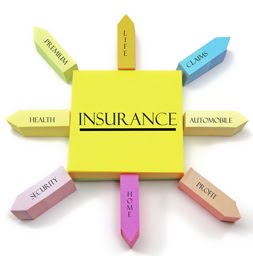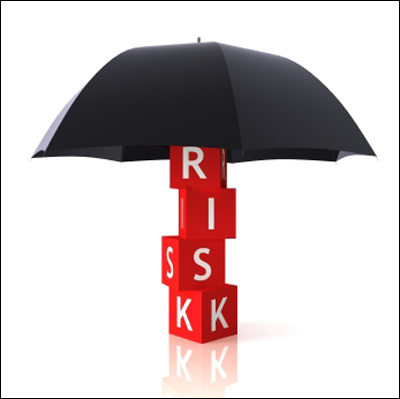 Cycling is a great pastime for fun, health, and recreation. There has been an increase in the availability and uptake of boutique and high end bicycles in Australia. There are a number of specialist insurers that focus on bicycle insurance.
Cycling is a great pastime for fun, health, and recreation. There has been an increase in the availability and uptake of boutique and high end bicycles in Australia. There are a number of specialist insurers that focus on bicycle insurance.
The first simple answer to this is that expensive bicycles are as easy to steal as cheaper ones – and that is easy. The next is that lightweight carbon fibre compound and other expensive alloy and composite materials are almost always impossible to repair. A frame broken in a driveway accident will usually require replacement. For an $8000 bike, that is not a happy proposition.
Aside from a clumsy to carry profile, and perhaps the proliferation of security cameras in city areas, there is not much to prevent a determined bicycle thief from making off with an expensive lightweight bike. Most expensive racing and off road bicycles are light, which makes them a favourite and easy target – easy to carry off and high value. Determined criminals know that parts are worth a lot of money, and so they are not shy to opt to break or cut a frame or remove a wheel to take the remainder of the unit. As with vehicle theft – the parts can end up being combined with those of other stolen units.
Bicycle insurance is still regarded as a relatively new kind of insurance product. It is important to read all of the fine print, do research, and seek the advice of a professional insurance advisor. As with vehicle insurance, the location where the bike will be parked and stored makes a difference. Different cyclists have very different insurance needs based upon the kind of cycle usage. If the bike is ridden to work daily and parked in an underground carpark, then the insurance profile will be different than that for a bike that is only used for professional racing. Transport on car racks involves certain breakage risks, and any bike that is left in a car park or driveway is at risk of both theft and damage by vehicles.
One way to insure a bicycle is with standard home and contents policies, or for professional cyclists there may be business type insurance policies that cover the bike as a part of insured equipment. However, there are some sound arguments for using a specialist bicycle insurer and bicycle specific insurance policy. As noted above, expensive bicycles have expensive parts or accessories, and there are often limits on what will be covered by home and contents policies. There can also be significant variability between the cost of insurance policies, and so shopping around is essential.
Joanne Lemke is a final year creative writing student at UOW, who is looking to break into the corporate copywriting space once she graduates and hopefully go on to eventually some day write a book around her other passions, namely business and financial changes.
 The insurance industry is footing an ever increasing bill for the devastation being caused to thousands of homes and vehicles across the UK as a result of climate change. The huge rise in payouts over the past decade or so for risks such as floods could render the insurance industry unsustainable if the current trends continue.
The insurance industry is footing an ever increasing bill for the devastation being caused to thousands of homes and vehicles across the UK as a result of climate change. The huge rise in payouts over the past decade or so for risks such as floods could render the insurance industry unsustainable if the current trends continue.
The insurance industry is being urged by the Chartered Insurance Institute (CII) to step up their efforts to engage the government and policymakers on the issue and increase awareness of the dangers climate change poses. It is feared that without swift action insurers will be unable to offer cover to residents in high risk areas of the UK as well as oversees.
The CII recently published the third in their series of reports looking closely at the impact climate change is having on the insurance industry. The report put forward three visions of the future, devised by leading climate change and insurance experts, and the risks each posed for insurers and society as a whole.
Best case scenario
This favourable scenario looks at the future in a world that has managed to harness renewable sources of energy effectively and successfully minimise the amount of green house gases produced by the burning of fossil fuels. Governments across the world have been able to develop infrastructure sufficiently to ensure there are early warning systems in place to allow them to counter any climate risks without the destructive consequences such events bring today. In this scenario insurers encourage the development of sustainable practices by incentivising their customers financially.
The middle ground
In much the way the insurance industry is headed at present, this scenario bases its premise on a limited endeavour to introduce sustainable practices and sporadic efforts by governments to increase the use of renewable energy sources. In this scenario the insurance industry would be left with little choice but to withdraw cover from high risk locations prone to extreme weather conditions.
Worst case scenario
In this scenario only very little effort is made to increase the use of renewable energy sources. This would push the climate of the earth beyond the point of redemption, whereby efforts to increase sustainability in the future would be essential, but their implementation would be extremely costly and would only have limited success. The insurance industry would be unable to meet the costs of such an increasingly turbulent natural environment, with freak weather events and localised devastation becoming commonplace.
Although these scenarios are future predictions and far from definitive, they have been created based on detailed analysis of current and historical trends. The consequences of neglecting to act now and allowing our climate to become increasingly tempestuous are clearly severe, and potentially irreversible.
Claire White is an employee of ConstructaQuote, one of the UK’s leading insurance comparison sites, working with some of the UK’s leading insurers to find businesses and private customers alike great prices on a wide range of insurance products .
Tags: business, cash flow, claim, coverage, economy, financial planning, insurance, investments, money, returns, savings
 Business, Financial Planning, Insurance
Business, Financial Planning, Insurance
 Standard business property insurance policies only cover the potential loss of physical assets experienced in the case of a natural disaster. Traditional policies do not cover any potential loss in profits, temporary relocation expenses, continued operating costs or other additional expenses that the business may incur while repairs are being made. This is where business interruption insurance comes in. Added as a rider onto an already existing property insurance policy, it helps businesses continue to operate optimally during the unforeseen whims of nature.
Standard business property insurance policies only cover the potential loss of physical assets experienced in the case of a natural disaster. Traditional policies do not cover any potential loss in profits, temporary relocation expenses, continued operating costs or other additional expenses that the business may incur while repairs are being made. This is where business interruption insurance comes in. Added as a rider onto an already existing property insurance policy, it helps businesses continue to operate optimally during the unforeseen whims of nature.
Good For Any Business
Any business that has the possibility of being stuck by a disaster can benefit from interruption insurance. Obviously those businesses based in areas more prone to nature’s influence, such as coastal areas, will be more likely to find this type of insurance necessary. Just because the business isn’t located in hurricane alley however, doesn’t mean that interruption insurance is useless. It can be used to mitigate the financial impact of severe snowstorms, tornadoes, floods, earthquakes or any other disasters that causes property damage. Obviously, the greater risk the business is at, the higher the policy costs will be.
Acquiring Interruption Insurance
The step when considering business interruption insurance is to determine what level of coverage the business requires. Generate a list of all disaster related expenses including:
- Regular operating costs: This all includes items the business will still have to pay during the repair period, including payroll, rent, loan payments, etc. Utility expenses such as electricity are often not included as part of standard interruption insurance, so it may be necessary to ask about those provisions specifically.
- Projections of lost profits: Gather a history of profits to make accurate projections, and if the business is growing be sure to include potential growth in these figures. Keeping hard copies of these records in another location is wise; not much would be worse than being unable to file a claim because financial records are unavailable.
- Relocation expenses: It is likely that any disaster shutting down a business will render facilities at least temporarily unusable. Include costs for finding, outfitting, and moving equipment and personnel to a new location.
Ensuring the policy lasts enough to ensure a return to normal business is essential. Repairs oftentimes take longer than expected, and having cash-flow run out in the middle of them can potentially ruin a business. A good baseline to start from is six months, though that figure should be adjusted based on how much infrastructure the business has that may need repairing. Most policies don’t kick in until 48 hours after a disaster, so it is also important to have enough cash on hand to survive those first two days.
All About Stability
Business interruption insurance is intended to allow business to maintain financial stability as though a disaster had never occurred. These disasters are becoming more common, with a 50 percent increase in disaster frequency being reported by some insurance companies over the past few years. This increase makes it worth at least exploring the idea of business interruption insurance, whether it is a small local business or a large corporation.
Sarah works for Aor Insurances and writes all thier marketing material.
 Cycling is a great pastime for fun, health, and recreation. There has been an increase in the availability and uptake of boutique and high end bicycles in Australia. There are a number of specialist insurers that focus on bicycle insurance.
Cycling is a great pastime for fun, health, and recreation. There has been an increase in the availability and uptake of boutique and high end bicycles in Australia. There are a number of specialist insurers that focus on bicycle insurance.













